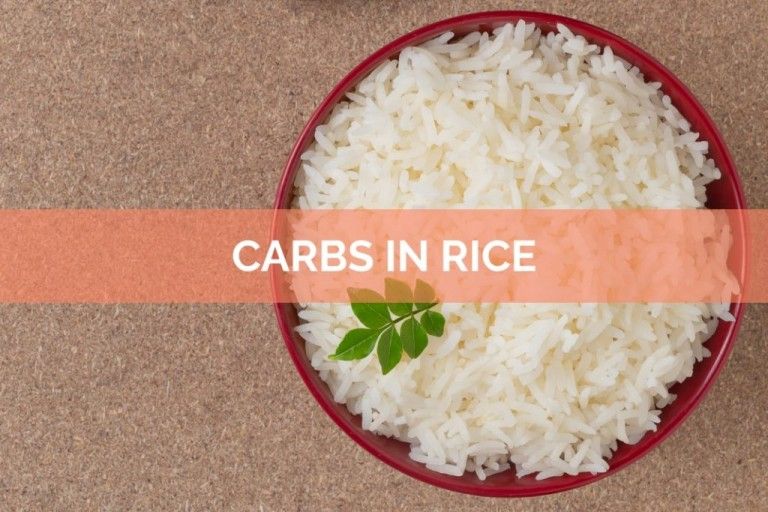Rice has been a part of everyone’s meal since time immemorial. It has been the most important staple food all around the world. This is so because rice is economical and easy to make. Moreover, everyone seems to love them.
Rice has been a part of everyone’s meal since time immemorial. It has been the most important staple food all around the world. This is so because rice is economical and easy to make. Moreover, everyone seems to love them. In addition to this, rice also has plenty of health benefits. However, the carbs in rice can be a matter of concern as 100 grams of rice contains an average of 53 grams of carbohydrates (that is a pretty huge percentage). This can be a problem, especially for people who follow a keto diet (as keto diet requires a person to eat a low carb meal), and as a result, most people cut back on rice. However, little do people know that some alternatives to the rice can be eaten even when trying to cut the carbs.
In this article, we will be discussing the contents of carbs found in various types of rice, the other nutrients found in rice, the benefits and risks of rice, the benefits and the concerns regarding the carbs, and some low carb alternatives for rice.
Carb content in different rice varieties (in one cup and cooked):
● White rice: 53 grams
● Brown rice: 52 grams
● Red rice: 45 grams
● Wild rice: 35 grams
● Black rice: 34 grams
Nutrients in rice:
A cup of rice (that is 100 grams) consists of the following nutrients (according to the USDA):
● Calories: 130
● Cholesterol: 0 milligrams
● Total fat: 0.3 grams
● Sodium: 1 milligram
● Total carbohydrate: 53 grams (most of it is present in the form of starch)
● Potassium: 35 milligram
● Protein: 2.7 grams
● Calcium
● Iron
● Vitamin B-6
● Magnesium
● Manganese
Benefits of rice:
As such, white rice is processed and therefore, it doesn’t contain any benefits. However, brown rice (as they are whole grains) are considered to be good for health. Thus, listed below are specific merits of eating brown rice:
- It supports bones, muscles, and nerves as magnesium present in the rice is the main component of bones and aids in the formation of DNA and proteins required by the nerves and muscles.
- It lowers the risk of heart disease as whole grains consumption is attributed to low chances of cardiovascular diseases.
- Rice is a gluten-free product and is therefore good for people suffering from celiac diseases.
- White rice is a fit choice for athletes since white rice contains high carb content, which can provide energy as athletes require a quick energy boost.
- Brown rice is beneficial for a diabetic person as against the high carb-containing white rice.
- Brown rice contains a large number of fiber, which is beneficial in many respects:
- It lowers the cholesterol level and thus decreases the chances of a heart stroke.
- Fiber is a certified stomach filler and can allow you to feel the whole while on a diet.
Risks associated with rice:
- Consumption of rice daily can lead a person to type 2 diabetes ( a condition consisting of high blood sugar levels). The high glycemic index scores associated with the white rice can be a threat to a diabetes patient.
- The high presence of arsenic and other heavy metals in the processed white rice can be a matter of concern as they can lead to a life-threatening disease.
- Brown rice contains an anti-nutrient called phytate (or phytic acid), which doesn’t allow the body to absorb the essential nutrients and minerals from the food.
Benefits of carbs:
Carbohydrates can be eaten in three forms; starch, fibre and sugar. Of the three, fibre is the best type. However, all three types are essential for the body to function perfectly. Deficiency of any of them can cause serious repercussions in your body.
Following are some of the merits of carbohydrates:
● Carbohydrates are considered the primary energy source (or you can say that it acts as a fuel to our body) for our brain, kidney, heart and nervous system.
● Carbohydrates deficiency can cause fatigue, headaches, nausea, weakness, constipation etc.
● Carbohydrates are primarily associated with sugars, and sugars are essential for controlling a person’s mood swings. You might have also noticed how your mood lifts suddenly after eating something sweet. And carbohydrates are good sugar (at least better than the other processed sugars).
● Carbohydrates can help in building muscle strength and improve a person’s athletic performance.
Risks associated with carbs:
● They can be attributed to obesity.
● They increase the threat of heart diseases.
● They can also lead to type 2 diabetes.
Low carb alternatives for rice:
● Shirataki Rice
○ Also known as the ‘miracle rice.’
○ Calorie-free.
○ Zero- carb substitute to your traditional white rice.
● Butternut Squash Rice:
○ Carbs in rice: 13.6 g per cup.
○ Excellent source of vitamin A, C and E.
● Cauliflower Rice:
○ It can be used in any cuisine dish.
○ Carb content: ONLY 5 grams in one cup.
● Rutabaga:
○ It is a root vegetable.
○ Carb content: 9 gram per serving.
From the above article, we can conclude that rice carbs are good for health but only when you eat small quantities of them. Moreover, they are good and even essential for people who are induced in rigorous physical activity. However, if you are trying to reduce your weight or are on a diet or a keto diet, for that matter, you should avoid rice.





